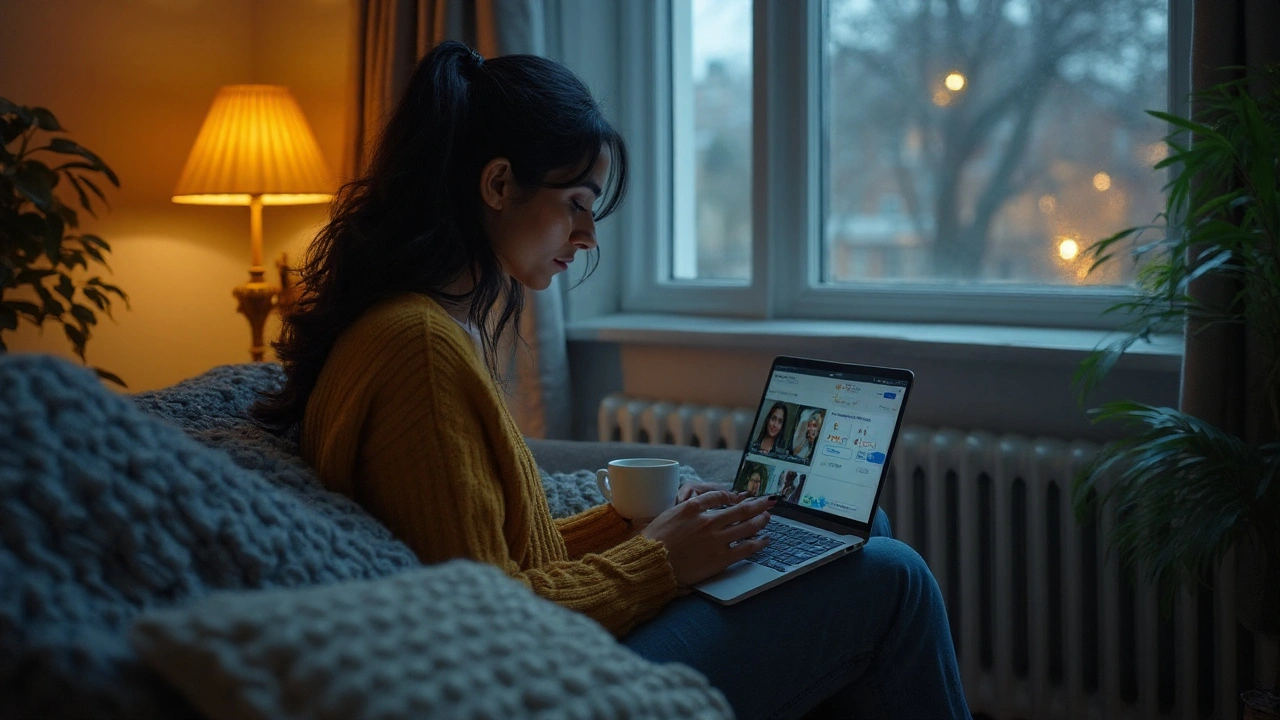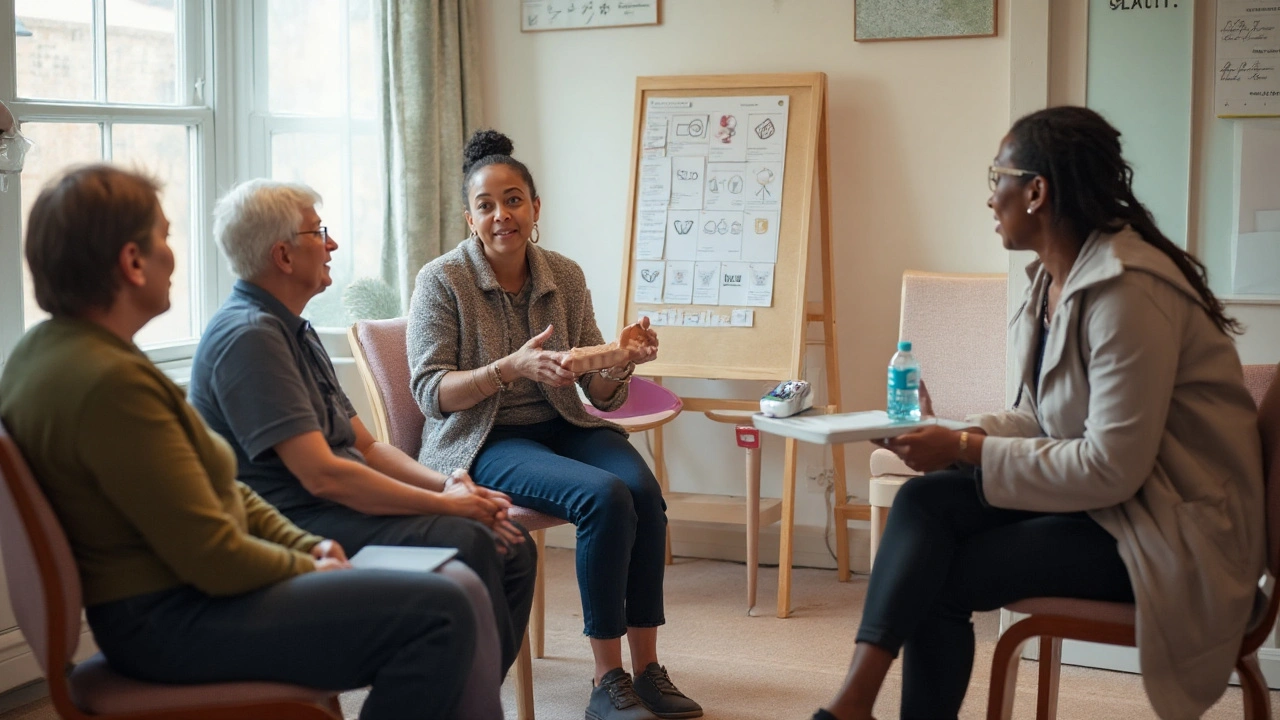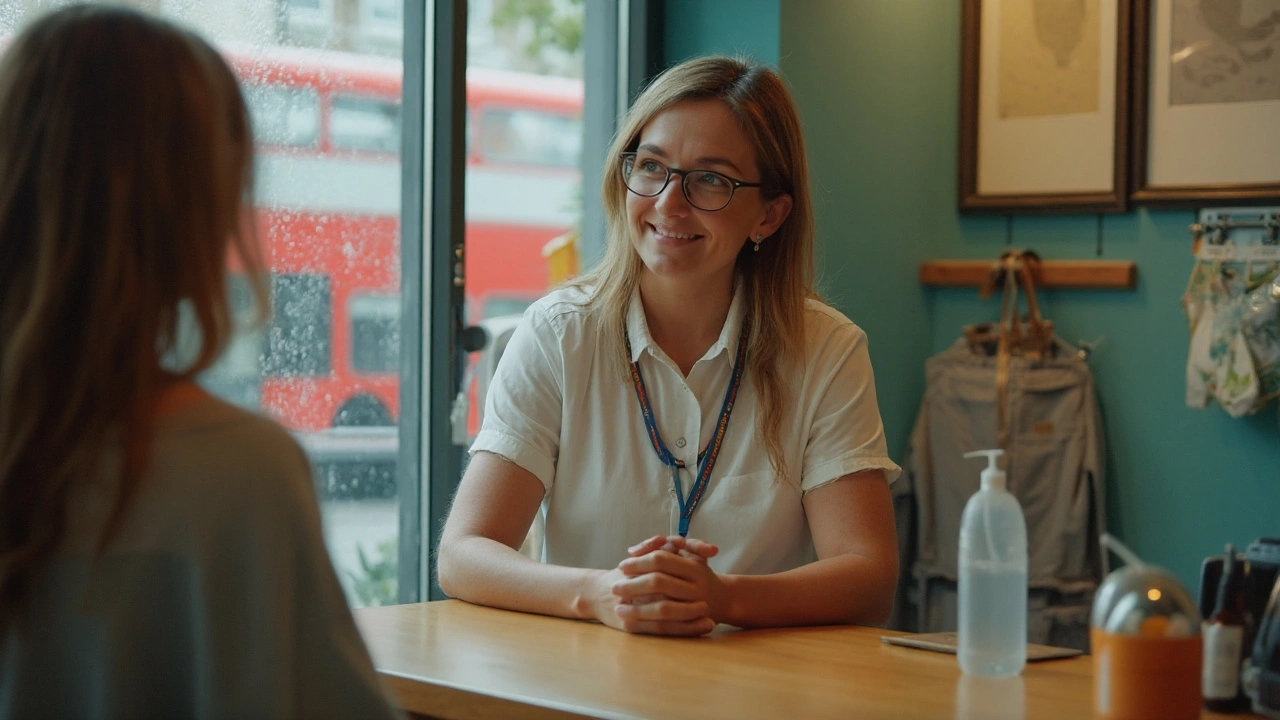Can a therapist who can’t see actually feel more? That question is pushing massage therapy into new territory. The promise of blind massage is simple: when vision steps back, touch steps up. You’re here to figure out if this approach is legit, safe, and worth booking. Short answer: yes, when it’s done by trained, licensed pros. Expect thoughtful touch, a strong focus on body mechanics, and a client experience many describe as unusually attentive and grounded.
- TL;DR: Blind massage is massage therapy provided by visually impaired therapists. Training and licensing matter more than eyesight. Outcomes for pain, stress, and sleep look similar to mainstream massage; many clients report standout sensitivity and presence.
- Evidence snapshot: Massage helps short-term pain and anxiety for many people (American College of Physicians 2017; NCCIH 2024 overviews). Unique advantages of blind massage are plausible (enhanced tactile acuity), but clinical head-to-head trials are limited.
- Safety: Same basics as any massage-clear consent, proper draping, clean space, and a therapist with recognized credentials. If anything hurts or feels off, say so.
- How to book: Verify training/licensing, insurance receipts (if you need them), and accessibility. Share your goals and any medical issues before the session.
- Value: Great for stress relief, muscle tension, tech-neck, and routine recovery. Not a replacement for medical care in red-flag situations.
What It Is and Why It’s Changing Massage
Let’s strip away the mystique. blind massage means massage therapy delivered by a therapist who is blind or has low vision. The techniques-Swedish, deep tissue, Shiatsu, Tuina, Thai-are not new. The twist is sensory: when the eyes step aside, hands and ears often do more of the “reading.” That can change pacing, pressure control, and how a therapist follows your breathing and muscle tone.
What you probably came here to figure out:
- What it is and whether it’s safe.
- If outcomes actually justify trying it.
- How to find a qualified therapist without guesswork.
- How a session works and how to get the best results.
- Costs, insurance coverage, and any legal traps.
Why it’s catching on: many clients want more than a quick spa rubdown. They want focused therapeutic work that respects boundaries and goals. Blind therapists often train with the same anatomy, pathology, and technique hours as sighted peers (in many regions, exactly the same). On top of that, research in sensory science shows people who are blind can develop sharper tactile discrimination and auditory attention. That doesn’t automatically make every blind therapist better-but it often changes the feel of the session in a good way: slower, more intentional, less distracted.
Evidence check: massage therapy as a whole has research behind it. The American College of Physicians guideline (2017) lists massage among options for acute and subacute low back pain. The U.S. National Center for Complementary and Integrative Health (NCCIH) summarizes moderate evidence for short-term relief of anxiety and musculoskeletal pain and potential benefits in cancer supportive care (symptom relief, not cure). As for blind massage specifically, rigorous randomized trials comparing blind vs. sighted therapists are limited. So the current best bet is practical: judge therapists by training, experience, and fit-not eyesight.
Common myths, sorted:
- “Blind therapists always have magic hands.” Skills vary. Training, practice hours, and communication matter most.
- “It’s a niche charity service.” No. It’s mainstream therapy. Many clinics, hospitals, and sports teams hire therapists based on competence, period.
- “It must be less safe.” Safety comes from education, sanitation, consent, and scope of practice. Visual status isn’t the limiter.
- “It’s erotic.” No. Therapeutic massage keeps clear, professional boundaries-full stop.
Who benefits most: people with desk strain (neck/shoulders), weekend warriors with tight hamstrings or calves, new parents running on zero sleep, and anyone spinning from stress. If you’re dealing with chronic pain, fibromyalgia, headaches, or anxiety, you might notice a tangible drop in tension and better sleep for a few days after sessions. The key is consistency. A single session can help, but a short series (for example, weekly for 3-4 weeks) usually gives clearer results.
Safety basics, same as any clinic:
- Intake form discloses medications, surgeries, injuries, and conditions like pregnancy or blood clots.
- Clear consent and draping. You control clothing level. Therapist only undrapes the area being treated.
- Pressure stays within your tolerance. Numbness, pins-and-needles, or sharp pain? Say stop.
- Red flags need medical care first: unexplained swelling, fever, suspected fracture, deep vein thrombosis, active infection, new severe headache after trauma.
Why this is “revolutionizing” isn’t hype. It’s inclusion. When clinics hire blind therapists because clients love the work, the field gets more talent, richer perspectives, and better access for clients who value therapists strong in listening and touch. That shift is reshaping training programs, accessibility in clinics, and how we measure “quality” in massage-by outcomes and client experience, not by assumptions.

How to Book, Prepare, and Get the Most From a Session
You want a session that helps, not a shrug-and-hope. Here’s a clear path from search to table time.
Step-by-step booking checklist:
- Define your goal in one sentence. Example: “Reduce right shoulder pain from computer work.” This keeps the session focused.
- Search by credentials first, not marketing. Look for licensing/registration and training hours that your region recognizes.
- Confirm scope and receipts. If you need insurance reimbursement, ask if the clinic issues receipts under the proper license (e.g., RMT in Canada).
- Ask about experience with your issue. “Do you treat tension headaches? What’s your approach?”
- Share special needs. Mobility, sensory sensitivity, proning limits, pregnancy-say it up front so the room and timing are set.
- Set expectations. “I like medium pressure and quiet; please check in mid-session.” A good therapist will love that clarity.
What a typical session looks like:
- Intake: 5-8 minutes to review health history, goals, and consent.
- Plan: therapist proposes areas of focus and technique options; you agree or adjust.
- Treatment: 45-80 minutes depending on booking. Expect careful pacing, frequent pressure check-ins, and focused work on key regions.
- Wrap-up: 2-5 minutes for feedback, hydration tips, and simple home care (one or two stretches or heat/ice guidance).
Pressure rule-of-thumb: aim for 5-7 out of 10-intense but not bracing. Pain that makes you hold your breath usually tightens muscles and backfires. Speak up. Your nervous system is the boss.
What to say if you’re nervous:
- “I’m new to massage. Please go slow and check in on pressure often.”
- “No oil on my face, please, and no music.”
- “If you find a knot, don’t dig hard-ease in and let me breathe through it.”
Cost and coverage (2025 snapshot, varies by city):
- Canada: CAD $90-$160 for 60 minutes in most urban areas. In Calgary, expect around $100-$140 for RMT sessions. Many benefit plans cover RMTs with 2,200+ hours; Alberta isn’t provincially regulated, so clinics often meet insurer standards voluntarily.
- U.S.: USD $80-$160 for 60 minutes depending on state and setting. Some HSAs/FSAs cover. Medical referrals can help in certain plans.
- Asia/Europe: Wider range-from community clinics around $25-$50 to medical centers at premium rates.
How to avoid a bad pick:
- Vague credentials or no license number when asked.
- Pressure to prepay packages before your first try.
- Refusal to discuss draping, consent, or boundaries.
- Dirty linens, strong chemical smells, or rushed, incomplete intake.
Accessibility tips (clients and clinics):
- Request a ground-floor room or elevator access if needed.
- Ask for a hydraulic table if getting on/off is tough.
- For low-vision clients booking a blind therapist: confirm wayfinding cues (contrasting floor tape, tactile markers) and quiet waiting space.
Simple home-care that compounds results:
- Heat tight zones 10-15 minutes the night after (neck/shoulders or low back).
- Easy range-of-motion work: 3 sets of 5 slow neck circles or hip hinges-no pain faces.
- Water and a short walk to flush metabolites and reset your nervous system.
Decision helper: blind massage vs. other modalities
- Pick blind massage when you value deliberate pacing, strong tactile listening, and a human-first experience.
- Pick sports massage when you need event-focused work tied to training cycles.
- Pick physio or chiro when you need diagnosis, rehab plans, or spinal manipulation. You can still add massage for soft tissue.
- Blend: many do physiotherapy for rehab plus massage for soft-tissue change and stress relief.
| Region | Regulation | Typical Training Hours | What Clients Should Check |
|---|---|---|---|
| Canada (Ontario, BC, NB, NL) | Provincially regulated | 2,200-3,000+ | Registered status (RMT), license in good standing, insurance receipts |
| Canada (Alberta, others) | Not provincially regulated | Common insurer standard: 2,200 | School accreditation, insurer recognition, clear receipts; city business license |
| USA (varies by state) | State-regulated | 500-1,000+ | State license, liability insurance, modality fit for your condition |
| Japan | National licensing (Anma/Massage/Shiatsu) | 2,000+ (vocational/university paths) | National license verification; clinic reputation |
| China | Mixed regulation; strong tradition | Varies by program | Clinic license, therapist certification; clarify Tuina scope |
| Thailand | Government-certified Thai massage | 150-800+ | Government certificate, hygiene standards, clear consent |
| Indonesia | Provincial/national support for blind therapists | Varies (community to formal) | Official certification, clinic cleanliness, boundaries policy |
Example scenario: Desk worker with neck pain
- Goal: Stop the 3 p.m. headache.
- Plan: 60 minutes-20 on upper back/neck, 15 on chest/shoulder opening, 15 on forearms/hands, 10 on jaw/temples (if safe).
- Home work: two doorway pec stretches daily; 2-minute chin tucks; heat pack at night.
- Measure: headache frequency over two weeks, not just “felt good.”

Questions, Risks, and What’s Next
Mini-FAQ
- Is blind massage different from “regular” massage? Techniques overlap. The big difference shows up in pacing, pressure sensitivity, and communication. Many clients find blind therapists very attuned to subtle tension shifts.
- Is it safe if I have a medical condition? Often yes, with modifications. Tell your therapist about conditions like osteoporosis, clotting issues, cancer, or pregnancy. They’ll adjust pressure and avoid risky areas-or refer out when needed.
- Do I undress fully? Your choice. Massage works through clothes too (think Shiatsu/Thai). Speak up about what’s comfortable.
- Can I claim insurance? In many places, yes-if your therapist is licensed/registered. In Canada, ask for an RMT with receipts that include license info.
- Are blind therapists “better”? Not automatically. Many are excellent. The safest bet is credentials, experience, and your own results.
- What if I feel awkward? Say it. A simple “Can we slow down?” or “Please avoid my lower back today” is normal. Good therapists welcome feedback.
Risks and how to mitigate them:
- Too-deep pressure leading to soreness: Agree on a pressure scale before you start. Ask for gradual depth.
- Flare-ups in chronic pain: Use shorter sessions first (45-60 minutes) and schedule lighter days after.
- Boundary confusion: Ask the clinic to explain draping and areas to be worked. You can stop the session at any time.
- Medication interactions (e.g., blood thinners): The therapist should adjust techniques; avoid strong deep work on high-risk areas.
Ethics and professionalism you should expect:
- Clear consent at each step; your body, your call.
- Professional draping and zero sexualized behavior.
- Scope of practice respected-no diagnosing diseases or replacing medical advice.
- Hygiene: clean linens, sanitized hands, tidy room.
Hiring and inclusion (for clinic owners):
- Job posts that focus on competencies, not vision status.
- Accessible layouts: tactile floor markers, consistent room setups, low-glare lighting, screen-reader friendly scheduling software.
- Training on communication norms (verbal landmarks instead of pointing).
- Across many clinics, client retention rates rise when therapists-blind or sighted-practice strong consent and listening.
What’s next in this space:
- Better outcome tracking: short pain/function surveys before and after sessions to show real change.
- Wearables to guide pacing: therapists timing techniques to breath or heart-rate variability (with consent).
- Inclusive education: more schools adapting materials for low vision (screen readers, tactile anatomy models), opening doors for talented students.
Cheat-sheet: what to ask before you book
- “What are your credentials and how many training hours?”
- “Do you treat my issue often? What does that usually look like?”
- “Can I get an insurance receipt under a recognized license?”
- “How do you handle consent, draping, and pressure changes?”
- “Is the space accessible for mobility needs?”
Quick decision tree
- If you want stress relief and better sleep within days → Book 60 minutes, moderate pressure, weekly for 3 weeks.
- If you want shoulder mobility for the gym → Add 10 minutes of chest/shoulder openers and take two simple exercises home.
- If you have a new red-flag symptom (fever, deep calf pain, sudden numbness) → See a medical professional first.
Next steps
- First-time client: Write down one goal and one no-go area. Book a single session before buying a package.
- Chronic pain: Stack care. Combine massage with gentle movement (walking, mobility work) and steady sleep habits.
- Booking for a senior or wheelchair user: Ask for a hydraulic table and extra time for transfers.
- On a budget: Choose 45 minutes on one or two priority areas instead of spreading thin over 90 minutes.
Troubleshooting
- Session felt too light: At the start next time, say, “Let’s try one level deeper. I’ll tell you if it’s too much.”
- Session felt too deep: Ask for a slow warm-up and cap pressure at 6/10. More depth isn’t always better.
- No change after two visits: Shift tactics-different technique focus, another therapist, or combine with physio exercises. Track pain or function on a 0-10 scale for two weeks.
- Soreness the day after: Gentle movement and heat help. If it lasts more than 48 hours or feels sharp, tell the clinic.
Credibility notes
- Massage for low back pain: American College of Physicians Clinical Practice Guideline (2017) included massage among non-drug options for acute/subacute low back pain.
- General benefits and safety: U.S. National Center for Complementary and Integrative Health (NCCIH) summaries through 2024 outline evidence for short-term relief of pain and anxiety, and safety when delivered by trained professionals.
- Tactile acuity in blind individuals: Peer-reviewed research has documented enhanced tactile discrimination in blind populations; clinical advantage likely varies by person and training.
If you’re weighing one simple call to action, make it this: book one focused session with a qualified blind therapist, set a clear outcome to track for two weeks, and judge by your own body’s report. That’s the honest test.


 Health and Wellness
Health and Wellness